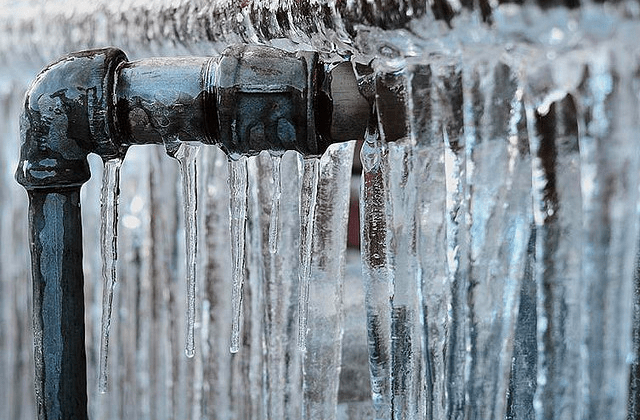Here in the next paragraphs you can locate a good deal of great tips around Helpful Tips to Prevent Frozen Pipes this Winter.

Winter can wreak havoc on your pipes, particularly by freezing pipes. Right here's how to avoid it from happening and what to do if it does.
Intro
As temperatures drop, the risk of frozen pipes increases, potentially leading to pricey fixings and water damages. Comprehending how to stop frozen pipelines is crucial for property owners in cool environments.
Prevention Tips
Protecting at risk pipelines
Cover pipelines in insulation sleeves or use heat tape to secure them from freezing temperature levels. Concentrate on pipelines in unheated or external areas of the home.
Heating methods
Keep indoor rooms properly heated, especially locations with plumbing. Open cupboard doors to allow cozy air to flow around pipes under sinks.
Just how to determine icy pipes
Seek decreased water flow from taps, unusual smells or sounds from pipelines, and visible frost on revealed pipelines.
Long-Term Solutions
Architectural adjustments
Consider rerouting pipelines far from exterior wall surfaces or unheated locations. Include extra insulation to attics, basements, and crawl spaces.
Updating insulation
Buy high-quality insulation for pipes, attics, and walls. Proper insulation aids keep regular temperature levels and lowers the risk of frozen pipelines.
Protecting Exterior Pipes
Garden hoses and exterior taps
Detach and drain pipes garden hose pipes before winter. Install frost-proof faucets or cover exterior taps with insulated caps.
Understanding Icy Pipes
What creates pipelines to ice up?
Pipes freeze when revealed to temperatures listed below 32 ° F (0 ° C) for prolonged periods. As water inside the pipes ices up, it expands, putting pressure on the pipeline walls and potentially triggering them to break.
Threats and damages
Frozen pipelines can cause water system disturbances, property damage, and pricey repair work. Burst pipelines can flooding homes and create considerable architectural damages.
Indications of Frozen Water Lines
Determining frozen pipes early can prevent them from breaking.
What to Do If Your Pipelines Freeze
Immediate activities to take
If you think icy pipelines, keep faucets open up to relieve pressure as the ice melts. Use a hairdryer or towels soaked in hot water to thaw pipelines slowly.
Conclusion
Avoiding frozen pipes requires proactive actions and quick responses. By recognizing the causes, indications, and preventive measures, home owners can shield their plumbing during winter.
6 Proven Ways to Prevent Frozen Pipes and Protect Your Home
Disconnect and Drain Garden Hoses
Before winter arrives, start by disconnecting your garden hoses and draining any remaining water. Close the shut-off valves that supply outdoor hose bibs and leave the outdoor faucet open to allow any residual water to drain. For extra protection, consider using faucet covers throughout the colder months. It’s also important to drain water from any sprinkler supply lines following the manufacturer’s directions.
Insulate Exposed Pipes
Insulating your pipes is an effective way to prevent freezing. Pipe insulation is readily available at home improvement stores and is relatively inexpensive. Pay close attention to pipes in unheated areas such as the attic, basement, crawl spaces, or garage. Apply foam insulation generously to create a buffer against the cold. You can also wrap your pipes in heat tape or thermostat-controlled heat cables for added warmth.
Seal Air Leaks
Inspect your home for any cracks or openings that could let in cold air. Seal any holes around the piping in interior or exterior walls, as well as the sill plates where your home rests on its foundation. Additionally, make sure to keep your garage door closed unless you’re entering or exiting. Leaving it open creates a significant air leak that can lead to frozen pipes.
Allow Warm Air Circulation
During cold snaps, it’s essential to allow warm air to circulate evenly throughout your home. Leave interior doors ajar to promote better airflow. Open kitchen and bathroom cabinets to help distribute heat consistently around the rooms. If you have small children or pets, be sure to remove any household chemicals or potentially harmful cleaners from open cabinets for safety.
Let Faucets Drip
A small trickle of water can make a big difference in preventing ice formation inside your pipes. When temperatures drop significantly, start a drip of water from all faucets served by exposed pipes. This continuous flow helps prevent the water from freezing. Additionally, running a few faucets slightly can relieve pressure inside the pipes, reducing the chances of a rupture if the water inside does freeze.
https://choateshvac.com/6-proven-ways-to-prevent-frozen-pipes-and-protect-your-home/
:strip_icc()/snow-outdoor-faucet-pipes-4af65d1e5e904fb1aa7bf74071fe5d89.jpg)
We had been shown that editorial on Preventing and dealing with frozen pipes from an acquaintance on another web address. Liked our piece? Please share it. Help someone else discover it. Thanks a lot for your time invested reading it.
About